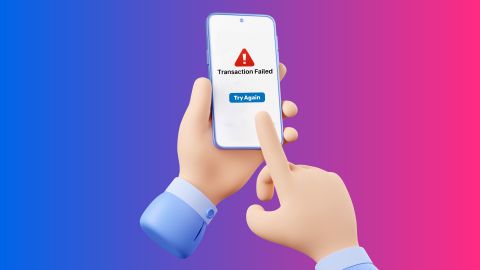Learn everything you need to know about the different types of electricity—static, DC, and AC—along with their unique features, uses, and safety precautions in this comprehensive guide.
Types of electricity
-
Electricity powers our lives in many ways. It lights up homes, runs machines, and makes technology possible. But did you know there are different types of electricity? This article explains static electricity and current electricity.
It also covers how choosing the right electricity type matters for various needs. For managing your electricity bills seamlessly, platforms like Bajaj Pay offer reliable solutions.Consider Bajaj Finserv for Electricity Bill Payments
Electricity connects us to comfort, work, and productivity. Paying bills on time ensures uninterrupted services.
Platforms like Bajaj Pay make this process easier. Here’s why Bajaj Pay is a great choice:- Ease of use: Simplified payment steps.
- Multiple payment options: Pay using UPI, net banking, or cards.
- Wide coverage: Supports most electricity boards in India.
- Instant confirmation: Get immediate payment alerts.
Introduction to electricity and its forms
Electricity is the flow of energy that powers devices. There are two main types: static electricity and current electricity. Each type has unique uses and behaviours, helping us meet our energy needs effectively.Static electricity
Static electricity happens when charges build up on a surface. For example, rubbing a balloon on your hair creates static electricity. It doesn’t flow like current electricity but can cause sparks or shocks.
This type of electricity is mostly harmless but can sometimes damage electronic devices. Engineers often manage static electricity in factories to prevent accidents. While it’s fascinating, it’s not useful for powering devices.Current electricity
Current electricity flows through wires to power devices. It comes in two forms: direct current (DC) and alternating current (AC).Key subtypes of current electricity
Direct current (DC)
Direct current flows in one direction, making it ideal for devices like batteries and electronics. DC is stable and reliable, making it suitable for small gadgets and portable power tools.Alternating current (AC)
Alternating current changes direction at regular intervals. It is the most common type of electricity in homes. AC is efficient for transferring power over long distances and powering large appliances.Types of electrical currents by application
Type Application Examples Industrial Heavy-duty operations Machinery, welding equipment Residential Daily household tasks Lights, fans, televisions Portable Mobile power requirements Power banks, small electronics Industrial vs. residential electric currents
Industrial currents:- Designed for high power needs.
- Operates heavy machinery efficiently.
- Requires special safety measures.
- Supports household appliances like lights and fans.
- Easy to install and maintain.
- Uses alternating current (AC) for efficiency.
Safety tips for working with different electric types
- Always turn off power before handling wires.
- Use insulated tools when working with electricity.
- Avoid overloading sockets to prevent short circuits.
- Keep water away from electrical outlets and appliances.
- Regularly check and repair faulty wiring.
Choosing the right type of electricity source
Selecting the right electricity source depends on your needs. For heavy-duty tasks, industrial electricity works best.
Portable electricity is perfect for gadgets, while residential electricity powers daily appliances. Always consult an expert to match your requirements.Importance of electricity payment online
Online payments save time and reduce errors. Here’s why paying electricity bills online is smart:- Convenience: Pay anytime, anywhere.
- Reminders: Avoid late fees with automated alerts.
- Secure payments: Platforms like Bajaj Pay use encryption for safety.
- Rewards: Earn cashback or points on select transactions.
Conclusion and key takeaways
Electricity powers modern life in two main forms: static and current electricity. Each serves unique purposes. Managing your electricity needs involves choosing the right type and paying bills on time.
Platforms like Bajaj Pay simplify electricity payments, ensuring comfort and reliability. Always follow safety tips when handling electricity and choose online payments for added convenience.
-
Recharge and Pay Bills
Mobile Prepaid
Mobile Postpaid
Broadband Bill Payment
Electricity Bill Payment
Bajaj Finserv App for All Your Financial Needs and Goals
Trusted by 50 million+ customers in India, Bajaj Finserv App is a one-stop solution for all your financial needs and goals.
You can use the Bajaj Finserv App to:
You can use the Bajaj Finserv App to:
- Apply for loans online, such as Instant Personal Loan, Home Loan, Business Loan, Gold Loan, and more.
- Explore and apply for co-branded credit cards online.
- Invest in fixed deposits and mutual funds on the app.
- Choose from multiple insurance for your health, motor and even pocket insurance, from various insurance providers.
- Pay and manage your bills and recharges using the BBPS platform. Use Bajaj Pay and Bajaj Wallet for quick and simple money transfers and transactions.
- Apply for Insta EMI Card and get a pre-approved limit on the app. Explore over 1 million products on the app that can be purchased from a partner store on Easy EMIs.
- Shop from over 100+ brand partners that offer a diverse range of products and services.
- Use specialised tools like EMI calculators, SIP Calculators
- Check your credit score, download loan statements and even get quick customer support—all on the app.
Frequently asked questions
What is the difference between static electricity and current electricity?
Static electricity builds up charges without flow, while current electricity moves continuously to power devices.
Why is alternating current (AC) more commonly used in households?
AC is efficient for long-distance power transmission and works well with household appliances.
How can I determine the right type of electricity source for industrial applications?
Consider power needs, machine requirements, and consult an expert for advice.
Can static electricity damage electronic devices?
Yes, excessive static electricity can harm sensitive devices, requiring preventive measures.
What are the benefits of online electricity bill payments?
Online payments save time, provide secure transactions, and offer rewards on platforms like Bajaj Pay.
Show More
Show Less




